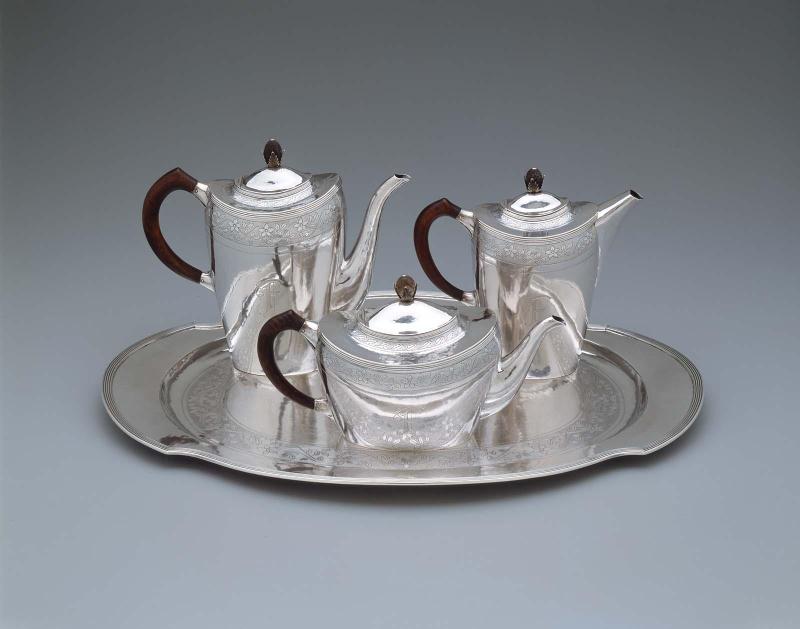Sugar bowl (part of hot-beverage service)
Robert Riddle Jarvie, the self-taught Chicago metalsmith, began to publicize his wares in House Beautiful in 1901. Although he initially billed himself as “The Candlestick Maker,” by 1904 Jarvie had expanded his wares and received special mention in The Craftsman for his graceful work in brass, copper, and silver. Between 1905 and 1910, he fashioned objects almost exclusively in silver and gold, many of which were commissioned as presentation gifts.
About 1912 Jarvie attracted the attention of Arthur G. Leonard (1862 – 1949), president of the Union Stock Yard Company. Leonard became an important patron, providing Jarvie with a studio on the company compound and commissioning numerous trophies as prizes for cattlemen at local livestock fairs. According to oral history, this beverage service is associated with Leonard’s firm. Presumably, it was purchased by a company vice president as a wedding gift for his daughter.
The service owes a great debt to the work of colonial silversmith Paul Revere. A set that matches this one was illustrated as “Revere-Jarvie Silver” in the June 1914 issue of Art Progress. The accompanying article cited Jarvie’s preference for Revere’s domestic designs and explained that Jarvie adapted the forms from an original Revere teapot, altering the spouts and handle. Jarvie also designed and executed a complete set of flatware to accompany the service.
The decoration and design relate directly to a Revere tea service that has been in the Museum of Fine Arts collection since 1896 (fig. 3). It has been suggested that Jarvie consulted published material, such as the 1906 or 1911 MFA exhibition catalogues that featured this Revere set. Despite the professed homage to Revere, the work of William Moulton may have served as a design source as well. A Moulton teapot, which was also illustrated in the 1906 catalogue, has a similar pinecone finial with cut-silver leaves and curved spout.6 Jarvie’s handsomely designed and finely crafted hot-beverage service demonstrates the parallel evolution of the Colonial Revival style in Chicago, beyond its epicenter in Boston.
This text has been adapted from "Silver of the Americas, 1600-2000," edited by Jeannine Falino and Gerald W.R. Ward, published in 2008 by the MFA. Complete references can be found in that publication.









